Goshen welcomes Hanukkah
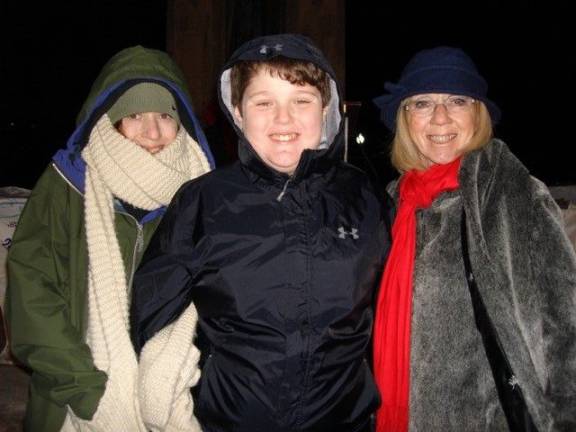
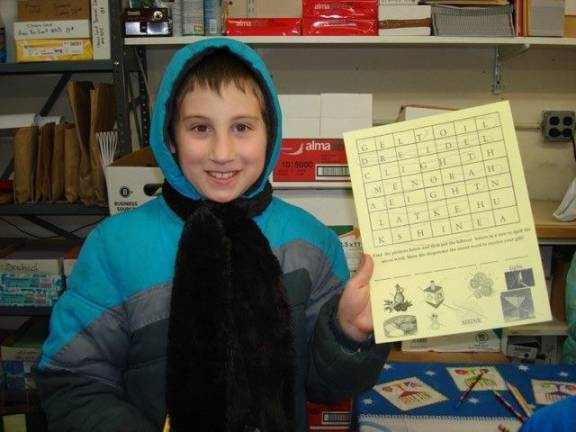
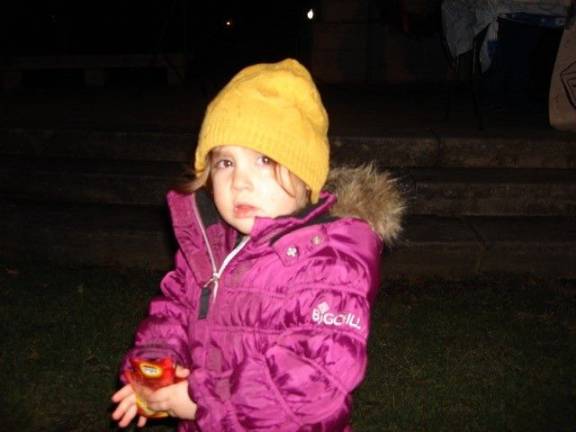
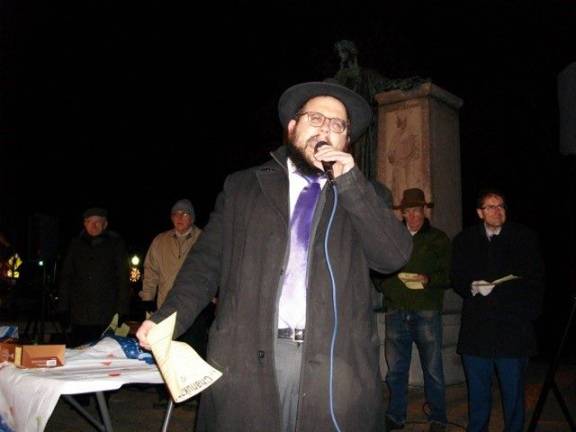
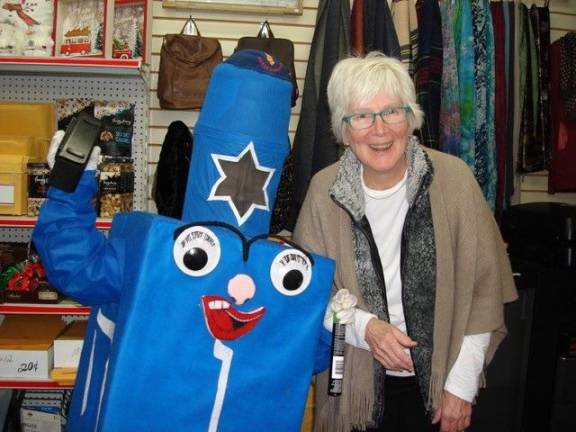
By Geri Corey
GOSHEN — Hanukkah, the Jewish Feast of Lights, is a holiday that’s especially appreciated by children. It has all the makings — food, music, games — of a fun night.
Although the holiday began at sundown on Sunday, Dec. 2, the festivities, including the gelt drop and lighting of the menorah, were celebrated on Tuesday evening at Church Park in the Village of Goshen. The holiday lasts for eight days, ending this year on Dec. 10.
Rabbi Meir and his wife, Rivkie, of the Chabad of Orange County organized the ceremony.
The children’s fun began with stop-ins at local stores, including Sweet Thyme Candy Store, Baxter’s Pharmacy, Goshen Hardware, Linda’s Office Supply, and High Withers Wine and Spirits, where they enjoyed craft projects or word fun puzzles.
Waiting for them at Church Park when they finished their crafts were traditional Hanukkah treats, potato latkes and jelly donuts.
These foods are fried in olive oil because of its significance in ancient history. When the Maccabees defeated the Syrian Greeks in Jerusalem, they regained control of the temple. As they rid the temple of idols, they found one small bottle of olive oil with which to light their lamps. That one small bottle provided light for eight days. To celebrate this miracle, the Jewish leader, Judas Maccabacus, declared a time of festivity, which has continued through the years.
The evening in the park was enhanced by the lively music of troubadour David Mikofsky, who sang popular Hanukkah songs in Hebrew, Yiddish, and Ladino.
When it came time to light the candles, officials climbed into a large cherry picker that brought them to the top of a large menorah, where they lit three candles — one for each night — and the Shamash, a candle used to light the other candles. Then Rabbi Borenstein dropped gelt, the gold-foil-covered chocolate coins, from the cherry picker.
Scrambling for the gelt is an exciting, joyous part of the ceremony for children, bringing a happy conclusion to the night’s merriment. All of the children went home with lots of gelt and a dreidel, so they could play Hanukkah's most popular game.